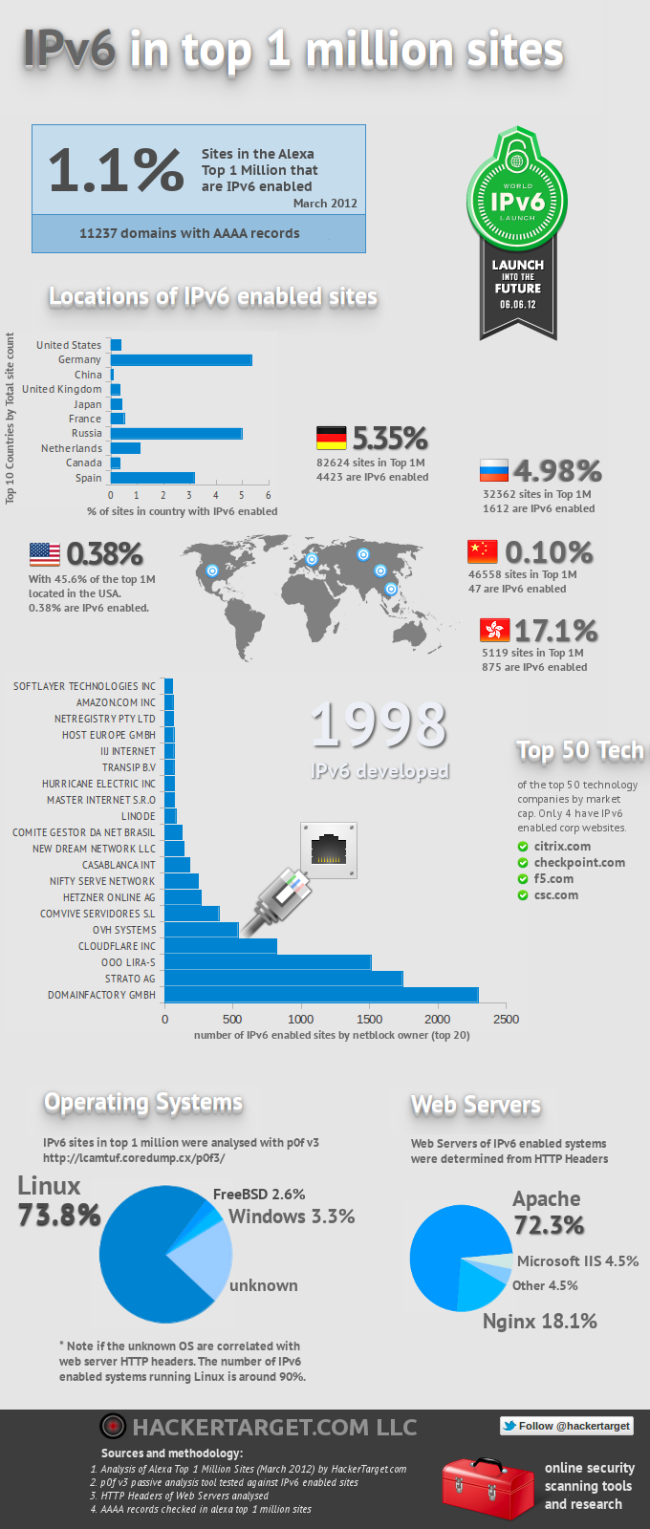The chances are no one will notice anything different about the internet today, but behind the scenes boffins will be rolling out a new standard for the web that makes it possible to create trillions of new web addresses.
Across the world today thousands of ISP and websites will permanently enable IPv6 for their products and services for the for the World IPv6 Launch, organised by the Internet Society.
The fact of the matter is the world was running out of space to create web addresses and the present standard IPv4 was no longer capable of matching the rise of many different devices, apps, websites and ‘things’ like machine-to-machine (M2M) devices that will proliferate in the years ahead.
One of the creators of the TCP/IP protocol, Google VP and internet evangelist Vint Cerf explains it rather well: “In order to connect to the internet, each device has to have an IP address – a numerical label which identifies every computer, phone, tablet, ebook reader, etc. IP addresses allow machines to find and communicate with each other online – without them you couldn’t check your email, visit websites or watch videos. But like a telephone network that is running out of phone numbers, the current internet has run out out of IP addresses.
“The internet we’ve relied on so far has space for 2^32 addresses – about 4.3bn. The new, larger IPv6 expands the limit to 2^128 addresses – more than 340trn, trillion, trillion! Enough for essentially unlimited growth for the foreseeable future. Without the rollout of Internet Protocol v6 (IPv6), which formally begins today for participating websites and other organisations on the web, we won’t have the room we need to grow.”
In February 2011, the Internet Assigned Numbers Authority (IANA) ran out of addresses to allocate to the Regional Internet Registries.
“While some of your devices may already share a single address (your home router acts like a switchboard for your home’s devices), if IPv6 isn’t implemented you’d soon have to share a single address with multiple people or even a whole neighbourhood. This tangled, constrained internet would be unsafe and unsustainable,” Cerf explained.
Cerf says that virtually all of Google’s services have been available over IPv6 for a while, but IPv6 access was only available to networks participating in the ‘Google over IPv6’ programme. From now on, they will be made available to any IPv6 network on the internet.
“Complete transition will take time. Some users may need to upgrade their home routers or possibly download updated operating system software to enable IPv6 in parallel with IPv4. If you’re interested in when you’ll get IPv6 connectivity (if you don’t have it already), we encourage you to reach out to your ISP and ask,” Cerf says.
Catalysts for IPv6 adoption
While the lack of IPv4 address space has been the obvious catalyst for upgrading to IPv6, Mike Sapien, enterprise telecoms analyst at Ovum says the proliferation of devices, mobile access to resources and B2C applications are driving support for IPv6.
“In addition, this isn’t really a complete migration – it is more of a dual-support capability that will be enabled for many years to come. Ovum research, for an upcoming IPv6 report, has revealed that B2C applications are one of the common drivers for customers, including service providers, moving to IPv6.
“Government regulations will also drive this support. We are increasingly seeing government promoting deployment of IPv6. This combined with mobile device support and mobile access to web resources are the main drivers for most businesses. Customers will need to take a good inventory of their IT resources that are now IPv4, have a phased plan for dual IPv4/IPv6 support and implement this plan.
“This planning also needs to include third-party partners, resources and links that can be easily overlooked. Now is the time for customers to go beyond planning and get to the test and implement phase,” Sapien said.
Main image (above) global internet via Shutterstock
Below, an infographic outlining the progress of IPv6 so far:
